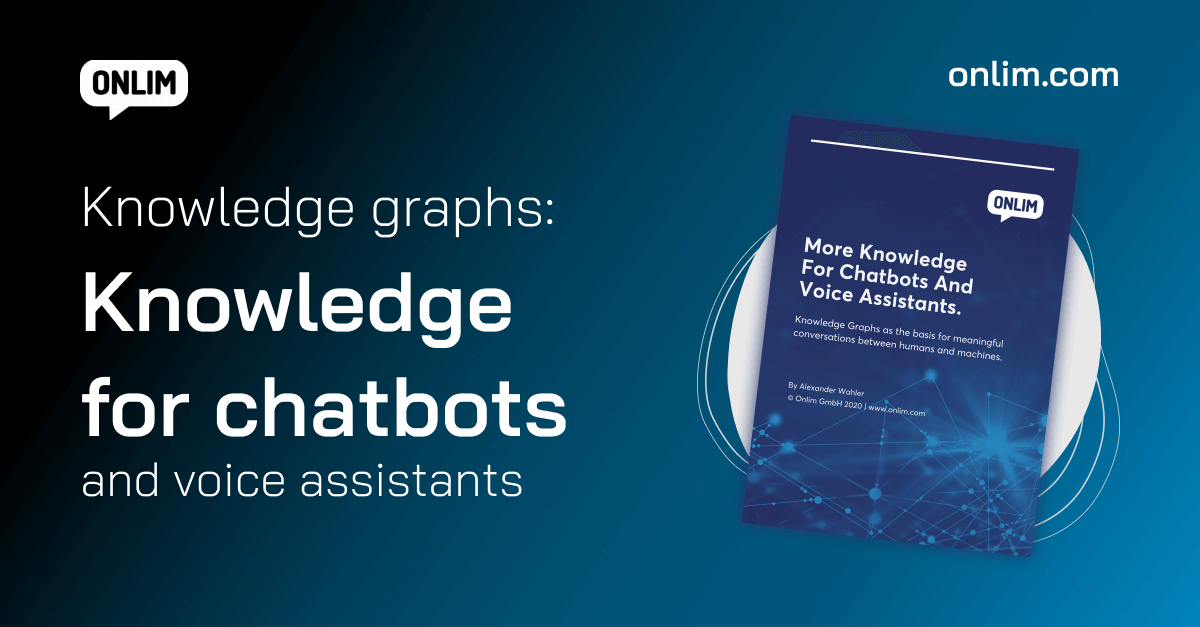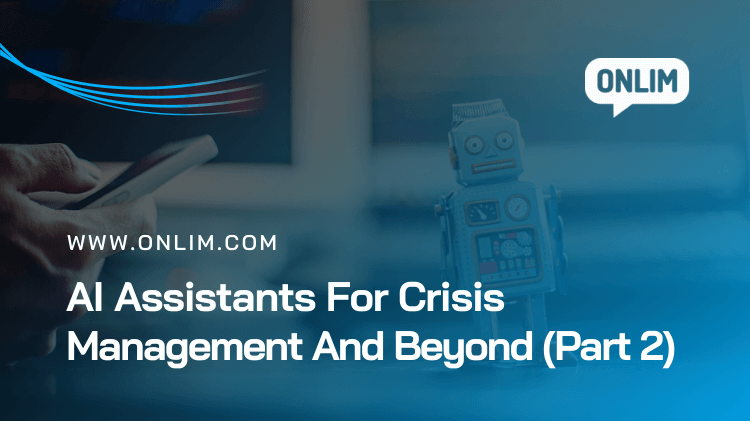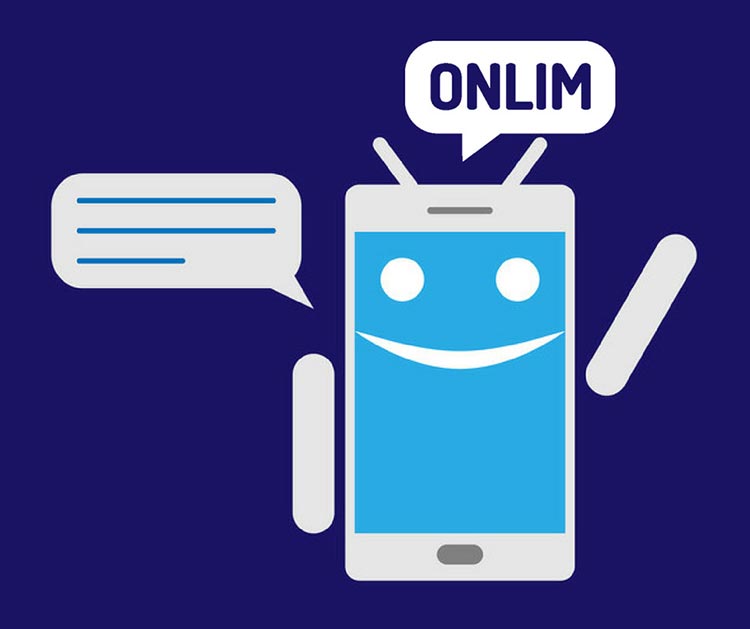Using AI Assistants For Crisis Management And Beyond (Part 2)
In part 1 of this article on using chatbots for crisis management we described the benefits of chatbots and what role they are playing during the current COVID-19 crisis. In the second part, you will not just learn more about the use of AI assistants for crisis management, but also what those assistants cannot do (yet) and the lessons we have learned over the last few months.
Let’s dive right into it.
Versatile AI assistants in the health sector
With the COVID-19 crisis, healthcare has been put in the spotlight for quite a bit. Let’s explore how AI assistants can be used in that industry for crisis management.
Health advise & organizational support through chatbots
Here’s a use case in the healthcare sector that we as Onlim have implemented for a German holistic spa recently: Users can tell the chatbot their personal complaints which will then suggest an appropriate treatment package. While this is far from a diagnosis, it can still help to narrow down symptoms and present suggestions as to which treatment options could be useful.
A classic use case in this sector would be the information supply a la “doctor Google”. Whether good or bad, it’s a fact that many people use the Internet to get information on their health issues. This can also be done digitally and in a very targeted manner via chatbots and voice assistants.
Hospitals can also use AI assistants. Upcoming organizational issues such as “Where can I find station XY?”, “What are the opening times of this station?”, “Which doctors work at station XY?”, “What do I have to take with me when I go to the doctor?” and so on are great questions to be answered by Conversational AI.
Can AI assistants even diagnose?
In a few years, AI assistants may even be used in diagnostics. Although such diagnostic systems are currently being experimented with, this area of application is still in its infancy.
Study successes from other areas of AI research, however, show promising results. A meta-analysis of numerous medical studies has shown that sophisticated deep learning algorithms can at least make a diagnosis based on X-rays as well or even more correctly than specialists can. This has been demonstrated in individual studies for the detection of heart or eye diseases.
Especially in the area of rare diseases, we can expect a lot of development in the future. Some illnesses, which many doctors are hardly aware of, could be better diagnosed by an AI by accessing “all diseases and symptoms”, respectively a more accurate diagnosis could be found with greater probability.
During times of crisis, AI assistants are not just beneficial in the health sector but have also shown to have great potential in education, for example.
By the way, have you checked out the Ultimate Chatbot Guide For Businesses yet?
AI assistants as homeschooling teachers: “Alexa, what am I learning today?”
Schools and kindergartens were closed during the lockdown, which led to quite some publications pointing out the potential of voice assistants as teachers for children. While the idea might be good, there are limitations, of course. Interacting with voice assistants cannot replace a teacher and how entertaining kids really find the dialogue with or teaching of Prof. Alexa, is another open question.
Let’s focus on the promising area of application that lies behind it instead: AI assistants for transmitting knowledge. With voice assistants, you can not only have conversations, but valuable information can be conveyed. There are already many Skills & Actions that offer users quizzes and let them learn new things. In the future, we expect more and more applications that can be used for transmitting knowledge.
Before we continue with the lessons learned, let’s briefly have a look at what AI assistants are not able to do for crisis management, yet.
What can AI assistants not do in times of crisis (yet)?
We cannot just look at the benefits and potential use cases of AI assistants for crisis management without looking at their limitations as well.
AI assistants can neither keep company nor replace social contact
Some articles wrote about voice assistants such as Alexa keeping senior citizens, who are not allowed to be visited as members of the high-risk group, company.
This statement does not make much sense to us. Of course, the interaction with Alexa, Google Assistant and so on can be fun, offer entertainment or convey knowledge, however, it cannot replace human contact or the relationship with family and relatives. And it should not have to, either.
AI assistants cannot diagnose Corona
We’re also very far from the potential diagnostic capabilities of AI assistants.
While diagnostic applications are quite likely in the future, they will be less about the sound of voice, and more about what has been said. Researchers are already working on identifying a possible Alzheimer’s disease by analyzing answers to health questions with AI.
Lessons learned
The corona crisis appears to have slowed down, but it is far from over. Nevertheless, after 4 months, clear lessons regarding the use of AI assistants for crisis management have been learned.
1. The use of AI assistants for crisis management has proven itself
Numerous use cases have shown that AI assistants can ensure an effective supply of information to citizens, users and customers in times of crisis. Whether on websites with chatbots or via voice assistants, frequent queries can be answered automatically with real-time information. Service employees are relieved and available for more complex inquiries or tasks.
Citizens and customers are provided with information better and faster. IT help desks are also supported by AI assistants and the crisis has revealed many more possible areas of application.
2. Automated communication via conversational interfaces is accelerating
The trend of automated communication is gaining momentum and showing very high potential. A lot of communication with customers and prospects is already shifting to conversational AI & conversational interfaces. Due to the corona crisis, this trend has accelerated massively.
However, it is not yet possible to say to what extent this will actually be implemented. After all, major projects have been put on hold in the past few months, overcoming the crisis was a priority. It will take until 2021 to see what further acceleration companies will see in this regard.
Chatbots can relieve overloaded helplines by automating and answering frequent inquiries in natural language. As a result, employees remain available for important complex questions and hotlines can effectively work and deliver a great customer experience even during peak times.
3. Businesses and government agencies must implement AI assistants now
The Corona crisis appears to have calmed down, but it will remain with us for a while. The time for businesses and authorities to put the implementation of AI assistants on their agenda is now!
And the reason for that is simple – when the next crisis comes it will be too late for companies to start! Within a few hours, employees will be overloaded, resources exhausted and waiting times far too long. During a crisis, it is very complicated to implement an AI assistant. In quiet phases, we estimate an implementation time of at least 6-8 weeks, while for public authorities, much longer processes are to be expected due to their obligation to invite to tender.
Some companies or organizations believe that they do not currently have the resources to develop such an AI solution. You have to keep in mind what relief and savings this can bring. Whether in times of crisis or beyond: AI systems can relieve employees and free them up for more complex tasks.
At Onlim it takes about 8-10 weeks for a solid AI solution to go live. During this period, a clear contact person in the company is required to develop a chatbot strategy and the necessary content. Their specific responsibility makes it possible to act quickly in the event of a crisis. This person is then the contact person for the AI chatbot expert, with whom the information and data is prepared and modeled in a so called knowledge graph. Once these systems are in use, the chatbots can be quickly and easily expanded with new information or queries. This enables effective relief and action even in unexpected crisis situations.
More Knowledge For Chatbots And Voice Assistants

Every company has the necessary resources, you just have to attribute them accordingly. As a company, you should simply commit to this decision. It requires top priority for a short period of time, after which you can continuously benefit from the advantages of automated communication.
Companies must act now, AI assistants can and should play an important role in crisis management. For this, the necessary infrastructure must be implemented during quieter times.
How can your company prepare for AI assistants now?
As a company, you should first consider the use case for which the development of an AI assistant makes sense and is effective. A use case is promising when it can save your customers time and provides relevant information faster or brings other advantages.
Based on this use case, you can choose a topic on which you receive many inquiries and assign the relevant experts from your company to a project team. Together with a technology partner like Onlim, you can set up the project, implement the chatbot and gradually develop the bot based on the use cases.
Once you have implemented this and have already connected your knowledge database to the chatbot, you can simply expand it continuously with new topics.
Also interesting: Prepare Your Data For Conversational AI With Schema.Org
Conclusion
Overall, the COVID-19 crisis has accelerated the adoption of AI assistants, promoted their acceptance, proven their effectiveness and brought many new possible use cases to light.
The next crisis is bound to come. The question is – will you be ready then?
What are Large Language Models (LLMs)?
March 18th, 2024|
What are chatbots and how do they work?
November 23rd, 2023|
The AI Act and its impact on the use of chatbots
October 27th, 2023|



